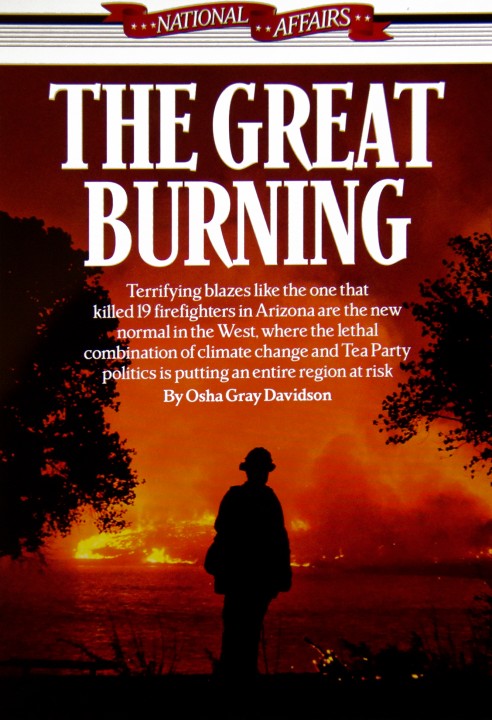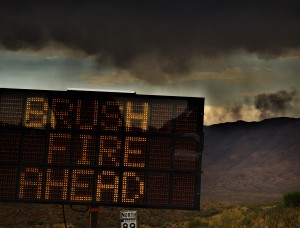I heard the awful news about the deaths of 19 Hotshot firefighters a few hours after arriving home from Montana. There were 18 of us, journalists from a variety of media, traveling by bus around the magnificent and sprawling Crown of the Continent region for an intensive five-day institute on environmental issues vital to the area, to the West, and in many cases, to North America. The trip was run by the Institutes for Journalism and Natural Resources, which, since 1995, has conducted expedition-style institutes across the nation for journalists.

Fire expert, Ron Wakimoto, University of Montana, talking to journalists at the 2013 Crown of the Continent Institute. (Copyright 2013, Osha Gray Davidson)
Parts of two days were devoted to learning about the history and ecological role of wildfires from University of Montana fire expert Ron Wakimoto, who stood by the side of the road next to the National Bison Range, south of Flathead Lake, pointing out how fire had shaped the landscape over millenia.
“You can see how the stands were quite open,” Ron told us, pointing to an area where fire had been restored, allowing the understory to burn and clearing some sections of any trees at all. But such areas are rare in the West, today, where even small fires are still frequently suppressed. The result, said Ron: “There’s no place to go to save yourself if the fire blows up.”
I spent part of a long ride north talking with Ron. He’s a fascinating and easy-going guy, full of stories and expert knowledge of fire. So his words were still fresh in my mind when I heard on the evening of June 30, that 19 firefighters had just died, trapped when a fire blew up in Yarnell, Arizona, an hour’s drive north of my home in Phoenix.
The next morning I headed up to Yarnell, or as close as I could get to it since the fire was still burning and there was a road block. I spent the next several weeks traveling back and forth between Yarnell and Phoenix, talking with Ron Wakimoto by phone and via email several times, and interviewing other fire experts, a former Hotshot crew member who worked the Yarnell Hill Fire, residents of the mountain village, officials in the United States Forest Service, the Bureau of Land Management, and anyone else I could get to help me understand not just what happened to the 19 young men of the Granite Mountain Hotshot Crew, but why it happened.
The resulting article is in the current issue of Rolling Stone, on newsstands and posted online. I hope you’ll read the piece, and come away, as I did, realizing that there’s a lot we can do to prevent tragedies, like the one on Yarnell Hill, from happening again.

